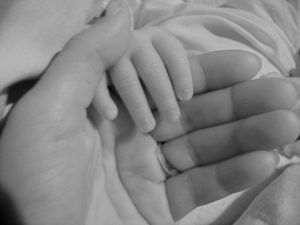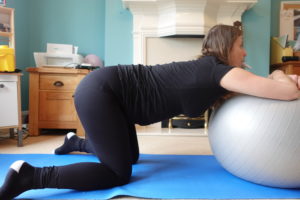Your all life, your pelvic floor, which is a hammock composed of muscles holding your visceral organs, had to go through a great deal (pregnancy, delivery, sport, menopause, cancer treatment). You may have perceived this sensation of heaviness standing.
Hormonal changes occurring during pregnancy and menopause but also due to disease (thyroid or cancer) play a big part in this pelvic floor weakening.
Your abdominal muscles also suffer during these events, sometimes leaving sequels such as diastasis, which is a gap in you rectus abdomini, the 6 pack muscles or a chronic weakness in your transverse muscle.
Consequently, it is essential to be aware of your pelvic floor muscles, transverse muscle and of their changes. Weakening of these muscles is the main cause of urinary and anal incontinences (coughing, laughing or even walking). It is common after giving birth due to the baby weight and the push to have a minor prolapse (lowering of bladder, uterus or rectum through the perineum hammock). Pelvic floor rehabilitation allows a complete recovery and decrease prolapse. However, without any specific treatment there is a risk of gradual worsening of this prolapse leading to permanent incontinence and requiring surgery.
 Do not hesitate to have a look at the other articles of the blog which contain different articles on the topic. It provides further information on woman’s health and obstetric problematic with more information on Incontinence Management, Safe Pelvic Floor exercises or Pelvic Floor Anatomy for example.
Do not hesitate to have a look at the other articles of the blog which contain different articles on the topic. It provides further information on woman’s health and obstetric problematic with more information on Incontinence Management, Safe Pelvic Floor exercises or Pelvic Floor Anatomy for example.
While it is never too late to start pelvic floor rehabilitation, be aware the sooner you start the quicker and better would be the outcomes.
First session always starts with a history taking to help the women’s health physiotherapist to understand the problems you are presenting with (pain, urinary issues, sexual dysfunction, constipation or difficulty to hold gas…) but also who you are and how it affects your life.
In a second time, the women’s health physiotherapist will examine both your hip bones and abdomen to evaluate the position of your pelvis and detect a potential diastasis.
Then, the women health physiotherapist will perform a vaginal touch to evaluate pelvic floor muscles tonicity, bladder static and, correct position of uterus and rectum.
Following the history taking and examination, in accordance with you, a tailored rehabilitation will be defined. It may include:
- Passive mobilisation and stretching techniques aim at you pelvic bones and muscles
- Manual pelvic floor treatment techniques
- Probe rehabilitation techniques, either electro stimulation or biofeedback techniques which allow to pursuit rehabilitation in functional positions (standing, walking)
- Anal rehabilitation either manual or with probe
- Abdominal rehabilitation internal following Abdo MG method
- Hypopressive abdominal rehabilitation
Pelvic floor rehabilitation is a global approach including various techniques selected in function of the new mum needs.
Urine leakage occurring rarely in sitting position, it is essential to perform an active rehabilitation, which means standing up, walking, standing on one leg…
Consequently, manual techniques are not enough and it is necessary to use a machine called biofeedback. This tool allow to engage your pelvis muscle and to visualised on a screen the contraction and relaxation, and this either lying on your back, sitting, standing, walking or even jumping.
Biofeedback also brings a didactic approach as you can see on the screen what you are doing. It is very helpful to develop better awareness, sensation and control of the perineum. However, it is only useful if associated with manual, abdominal and postural rehabilitation as all these aspects need to be addressed at the same time.
None of these techniques are painful. Commonly, 5 to 10 sessions are generally needed and will be associated with exercise sessions to do on your own. We present part of these exercises in our YouTube videos.
Obviously, the women’s health physiotherapist will adapt this exercises sessions in function of your need and teach it to you step by step (some are far from straight forward). She will also be able to provide advice concerning When and How to go back to sport.
If you already start exercises after your pregnancy, good! However, stop “stop pee” exercises! All the exercises need to be done with an empty bladder. “Stop pee” exercises create neurological dysfunction modifying the need to urinate and lead to urinary infections.
Additionally, be extra careful with all the exercises, fitness session and gym program increasing abdominal pressure. The increase of pressure in your abdomen will push on the pelvic floor muscles, stretching them and making them weaker, potentially leading to incontinence or even prolapse…
Hope you find the reading interesting! As usual don’t hesitate to ask your questions in the comment below!





4 Responses
Hi, I had my baby 2 and half months ago by C-section. Unfortunately, the wound opened up after 1 week of giving birth due to a strong sneeze while I was holding my baby. The second surgery was done ASAP and long story short it was a nightmare. I wanted to ask whether it is possible to see or speak with a physiotherapist regarding this afterbirth recovery. I do have some of symptoms you have listed. Thanks Alina
Hi Alina,
Thank you for your comment.
Sure, don’t hesitate to contact us by email on contact@myfrenchphysio.london or by message on our facebok page: https://www.facebook.com/MyFrenchPhysioLondon
Hello, where is your nearer therapist to Notting Hill, London, W11?
King regards
Liz Middleton
Hi Liz,
We offer home visit. Or our closest clinic is in Camden Town:
https://myfrenchphysio.london/contact-us-camden/
Best regards,
Virgil